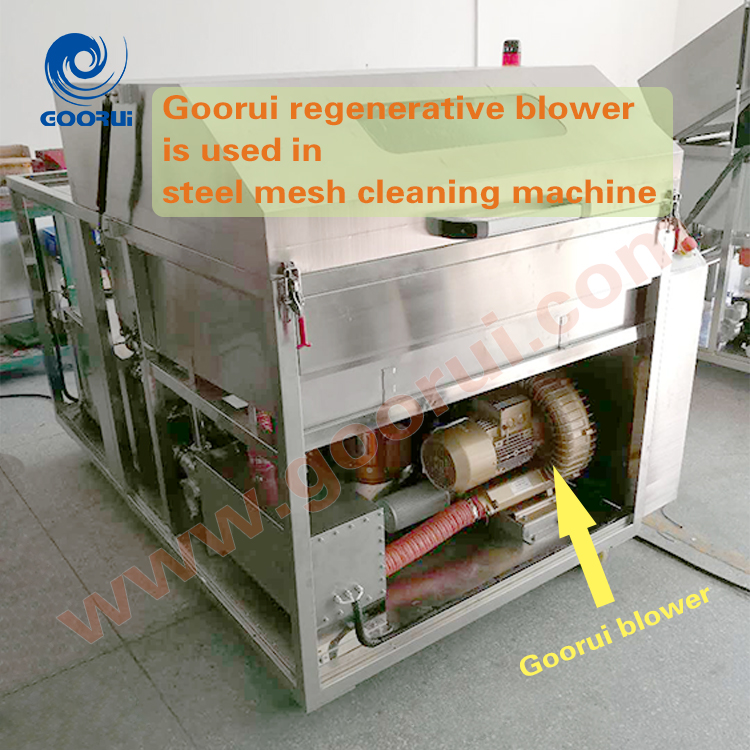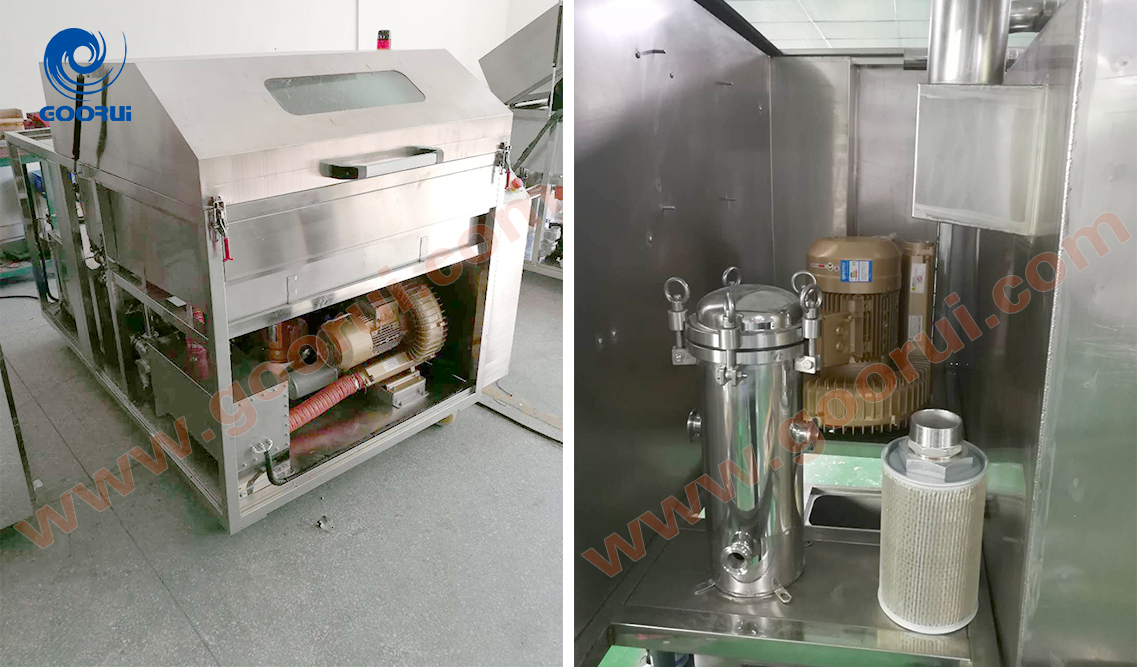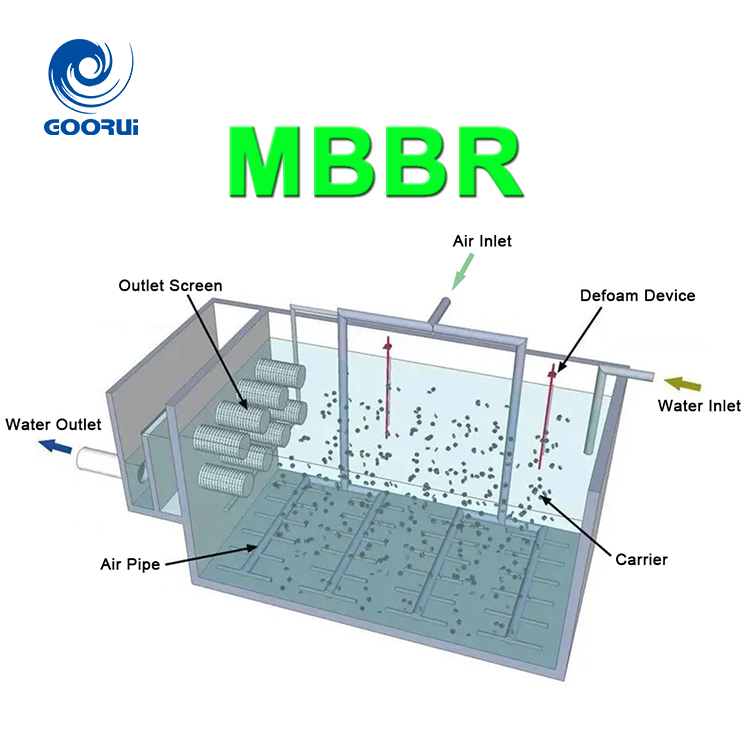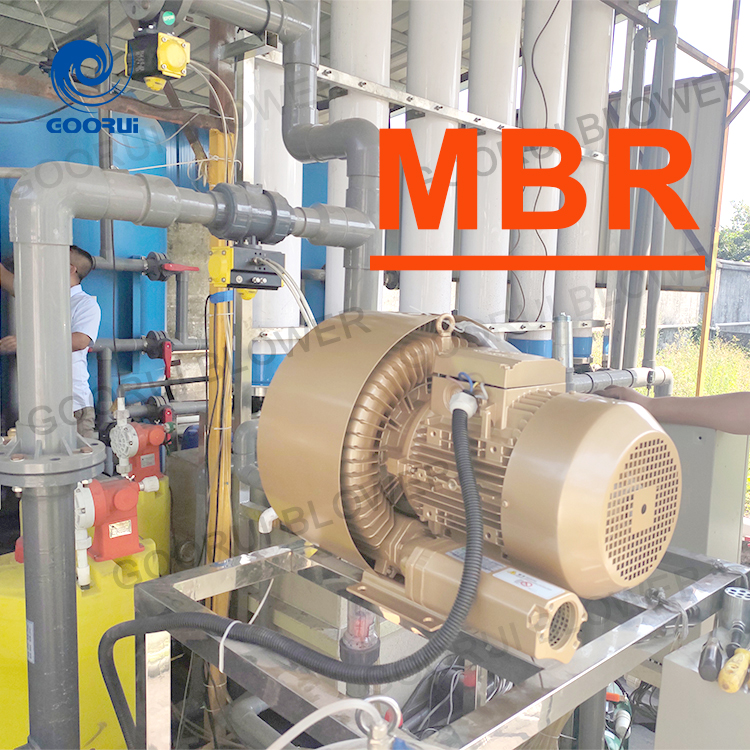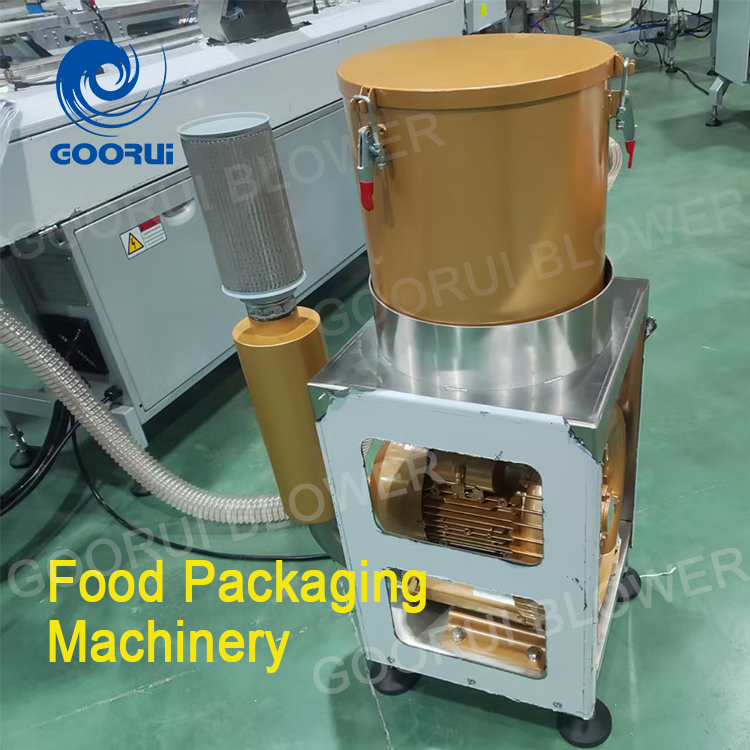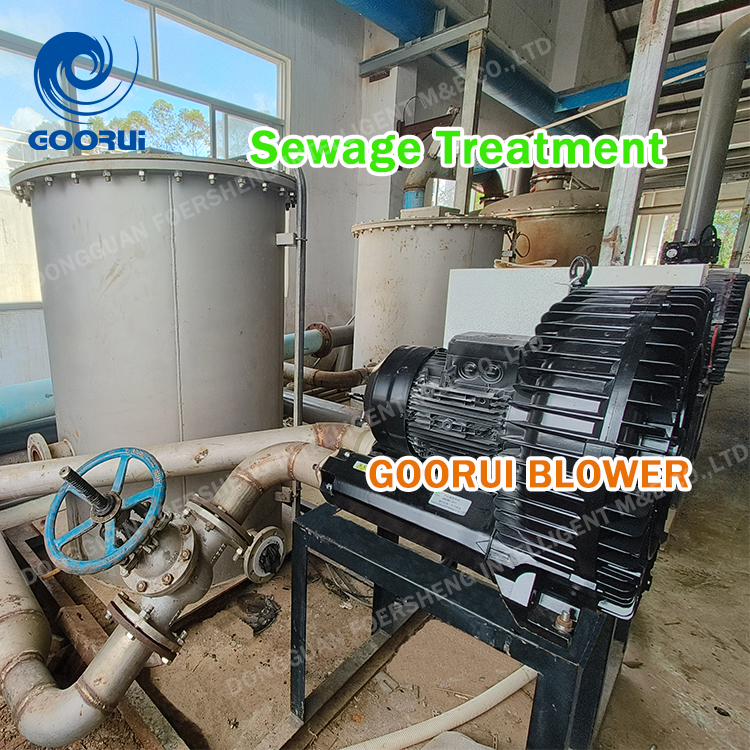Steel mesh cleaning machine not only cleans thoroughly, but also avoids possible harm to employees from direct contact with solvents. This cleaning machine adopts a fully pneumatic method and is completely unconnected to the power supply, so there is no risk of fire. In the past, we usually used wiping paper and solvent to clean the steel mesh that was replaced, which was time-consuming, labor-intensive and ineffective. The main purpose of high-pressure regenerative blowers is to use air knives to dry products.
The application of Goorui blowers in steel mesh cleaning machines usually involves the following key links and functions:
1. Workflow of steel mesh cleaning machine
Cleaning stage: The steel mesh (SMT template) removes solder paste and flux residues by spraying or immersion.
Drying stage: After cleaning, the steel mesh needs to be dried quickly to avoid residual water stains affecting subsequent use.
High-pressure gas assist: It may be used to blow away residual liquids or impurities.
2. Specific application of Goorui blowers
High-pressure drying:
The blower generates high-pressure airflow, which is directly sprayed onto the surface of the steel mesh through the nozzle to quickly blow away the moisture.
High wind pressure is required to ensure penetration of the fine holes of the steel mesh to avoid clogging.
Hot air drying:
In conjunction with the heating system, the fan delivers hot air to accelerate the drying of the steel mesh (a temperature-resistant fan is required).
Exhaust gas/steam emission:
Extract the volatile gases or water vapor generated during the cleaning process to keep the internal environment of the equipment stable.
3. Selection requirements
Wind pressure and air volume: Select according to the size of the steel mesh and the cleaning efficiency (such as high-pressure centrifugal fans are more suitable for drying).
Corrosion resistance: When in contact with cleaning agent steam, the fan material must be rust-proof (such as stainless steel or surface treatment).
Low noise and energy saving: There may be requirements for noise and energy consumption in industrial environments.
Stability: The fan needs to be durable when working continuously to reduce the frequency of maintenance.
4. Common problems and solutions
Moisture residue: Check whether the fan pressure is insufficient or the nozzle layout is unreasonable.
Corrosion damage: Confirm whether the fan material can withstand cleaning agents (such as alcohol, solvents).
Abnormal noise: It may be due to bearing wear or impeller imbalance, and regular maintenance is required.
5. Advantages compared with peers:
1). High temperature resistance, and adapt to continuous non-stop operation; – The air inlet temperature of Goorui fan can be allowed to be below 50 degrees, and the maximum temperature allowed under special circumstances is 70 degrees. We are currently at the forefront of the market
2). When operating at the limit, the fan has no vibration or low vibration, which reflects Goorui’s excellent operating balance performance and ensures the long life of the fan.
3). Energy-saving motors. Goorui fans all use energy-efficient motors. According to the corresponding government policies, they can enjoy government subsidies.
4). There is a professional technical team to provide pre-sales support and assist in model selection.
Suggestions:
Contact Gaorui fan technical support and provide specific parameters of the steel mesh cleaning machine (such as steel mesh size, cleaning beat, and drying time requirements) to recommend a suitable model.
If the existing blowers does not work well, try to adjust the nozzle angle or increase the wind pressure test.
Do you need to further explore the configuration of the blowers in a specific cleaning machine model? Please contact the Goorui team.


